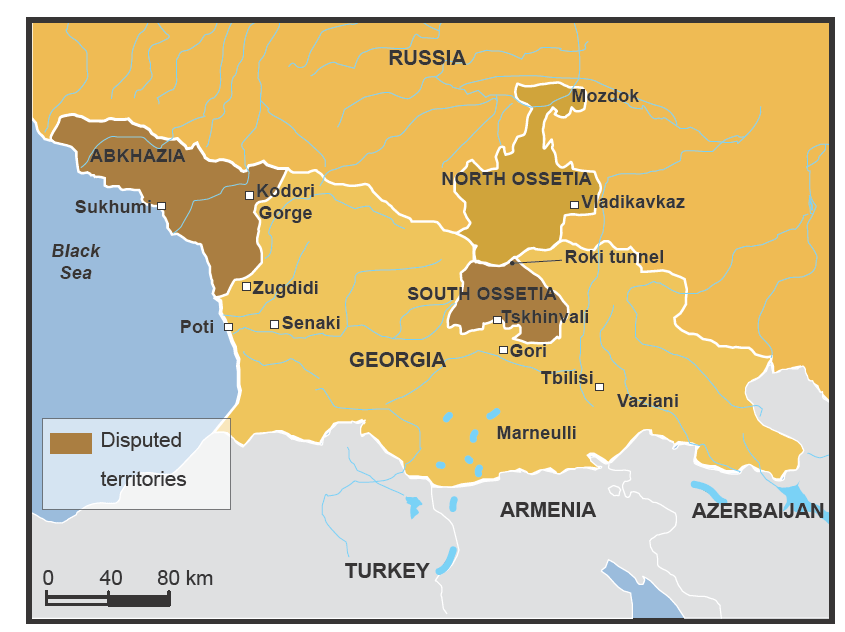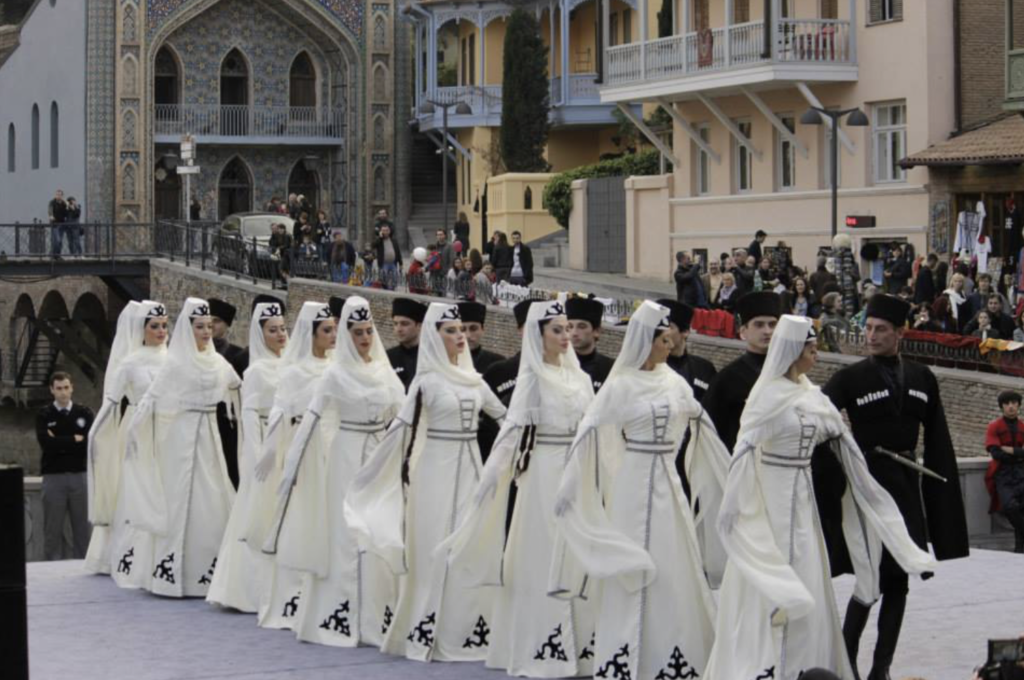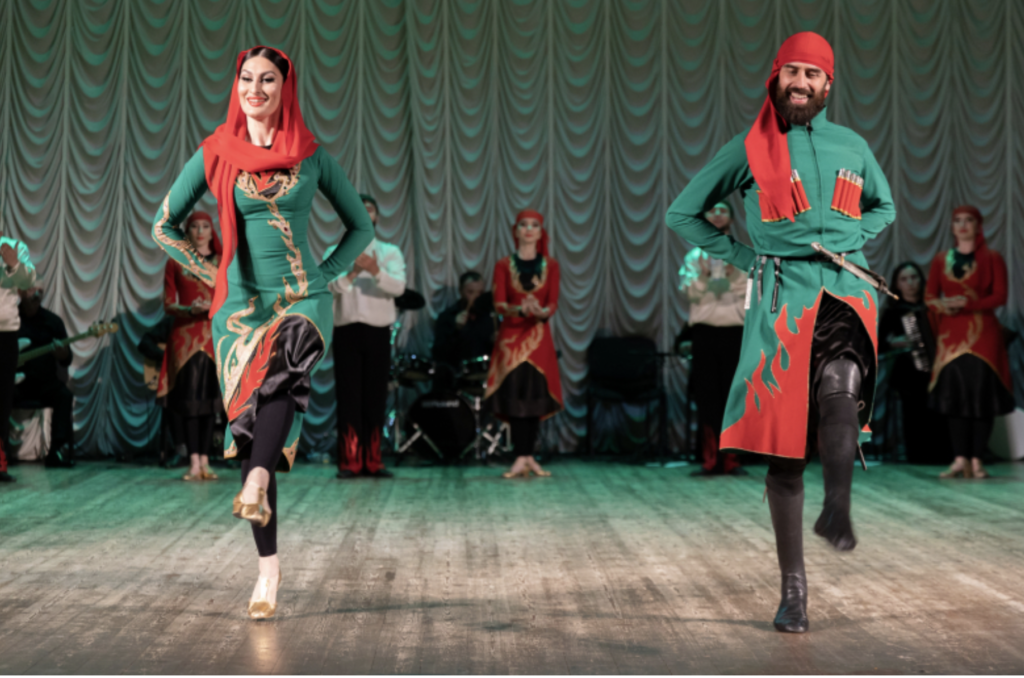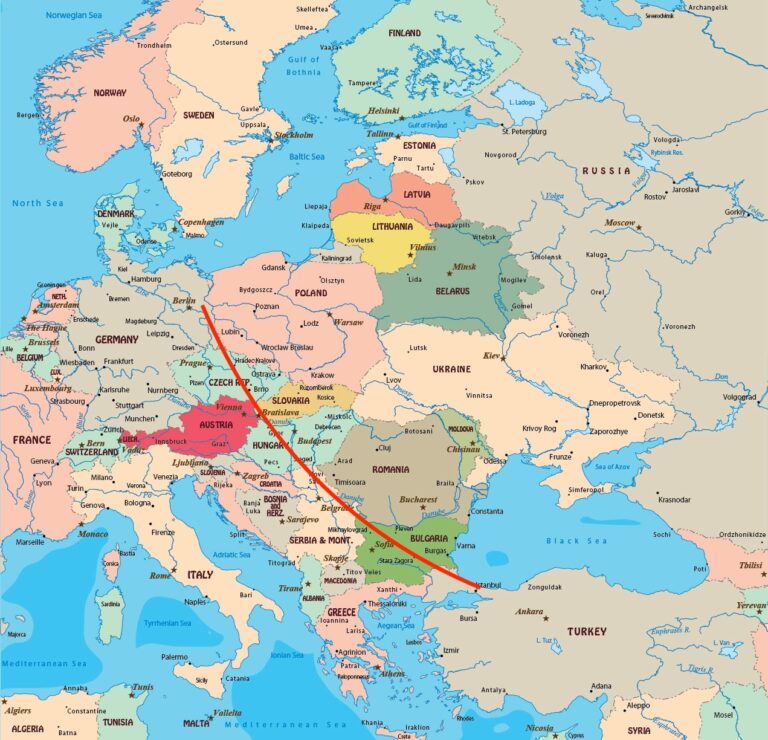By Andrea Tucci,
Georgia gained independence in 1991 following the dissolution of the Soviet Union but carried deep political and ethnic divisions. The main tensions have revolved around the separatist territories of South Ossetia and Abkhazia

At the dawn of independence from the Soviet Union, tensions between Georgians and Ossetians increased. In 1990, the Supreme Council of Georgia annulled South Ossetia’s autonomous status, causing discontent among the Ossetian population, which declared independence from the Georgian capital, Tbilisi, the following year.
What had been sporadic provocations until then erupted into a conflict in 1991 between Georgian troops and Ossetian rebels, who were supported and equipped by Russia. Many villages in the region were burned, including Georgian homes and schools in Tskhinvali, the de facto capital of South Ossetia. The conflict reached a stalemate in 1992 when Georgian President Shevardnadze (a former Soviet leader) agreed to a ceasefire, establishing a peacekeeping force composed of Russian, Georgian, and Ossetian soldiers
In 2004, nationalist Mikheil Saakashvili came to power in Georgia, winning over 90% of the votes in the elections. His government marked a radical shift for the country, steering it towards closer integration with Europe and the United States, and distancing it from Russia’s orbit. The flags of Georgia and the European Union began flying side by side and continue to do so today. Following this new Atlanticist direction, Tbilisi, the capital, also moved closer to NATO, even seeking membership. However, this policy of rapprochement with the West provoked a reaction from Moscow, which was concerned about the possibility of further NATO expansion eastward.
As part of this pro-Western agenda, Saakashvili also sought to fully reintegrate South Ossetia and Abkhazia under Georgian authority, exacerbating tensions with Russia.
Starting in April 2008, provocations between pro-Russian Ossetian separatists and the Georgian army significantly increased. Despite an attempt at a ceasefire promoted by President Saakashvili, the Ossetians continued their attacks on Georgian settlements. To restore order, Georgian defense forces were sent to the region, and within hours, they took control of Tskhinvali, the capital of South Ossetia
On August 7, 2008, Russian troops advanced across the Georgian border into the Tskhinvali region in South Ossetia and western Georgia. During the fighting, hundreds of people lost their lives. This conflict forced 30,000 people to flee their homes, and they are still prevented from returning today. Russia justified the invasion as an operation to protect the Ossetian population, launching a large-scale invasion, advancing deep into Georgian territory, and also occupying the cities of Zugdidi, Senaki, and Poti.
South Ossetia, even during the Soviet era, held the status of an autonomous region within the Georgian Soviet Socialist Republic.
The population is primarily Ossetian, and most are Christian Orthodox. Originally from an Iranian ethnic group, they speak a dialect called ‘Ironian,’ which belongs to a branch of the Iranian language

The Ossetian dance, at Tbilisoba
South Ossetia today continues to operate as a de facto independent state, supported by Moscow, though not recognized by Tbilisi or the international community. In 2021, the European Court of Human Rights accused the Russian Federation of human rights violations in the occupied regions.
Meanwhile, on the Black Sea in western Georgia, another region was seeking independence: Abkhazia. Most of the population is Christian Orthodox, but there is a minority of Sunni Muslims. The Abkhazians are closely related ethnically to the Circassians. The Abkhaz language is a Northwest Caucasian language spoken in Abkhazia (approximately 100,000 speakers) and parts of Turkey (approximately 50,000 speakers).

Abkhazian dance performance
In 1991, during the turmoil in South Ossetia, Abkhazian separatists also mobilized against the capital, Tbilisi, with support from Russia. The rebels took control of Sukhumi, later declaring it the capital of the Autonomous Republic, but Georgian Defense Forces quickly regained control of the city.
In September 1992, under Russian mediation, a ceasefire was signed. However, alongside legions of pro-Russian paramilitaries, the Abkhazians violated the truce and attacked Gagra, killing 1,000-1,500 defenseless civilians and burying them in a mass grave. With support from the Russian navy, they retook the capital of Sukhumi. The conflict ended with the consolidation of Abkhazian control over the region, which continues to be supported by Russia despite the lack of international recognition.
On August 12, 2008, under the mediation of French President Nicolas Sarkozy, a ceasefire was reached. The agreement called for the withdrawal of Russian and Georgian troops from the conflict areas and free access for humanitarian aid. However, it was never fully implemented, and Russian troops remained stationed in the separatist regions, which Moscow officially recognized as independent republics. Despite the tenacity of Georgian defenses, the Russian army managed to gain control of most of South Ossetia and Abkhazia, consolidating the ‘de facto’ separation of these regions from Georgia.
This recognition is condemned by the European Union and the international community, where Russia, with its military presence, continues to violate the human rights of these communities in Georgia..
.



